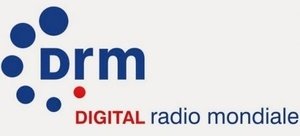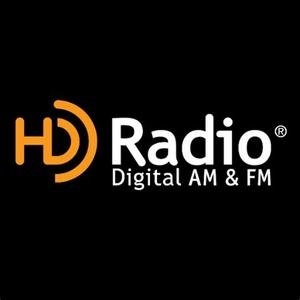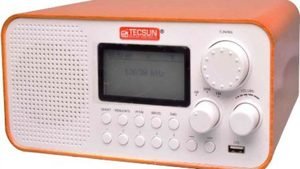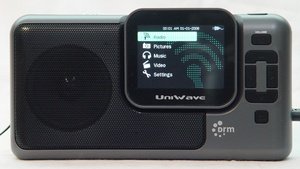
As the FCC considers allowing AM broadcasters to voluntarily operate as all-digital facilities, there’s been plenty of feedback from the industry, listeners, engineers & consultants – some of it conflicting in opinions & objectives, agreement & disagreement. While the defined standard for digital broadcasting in the US – and now Canada – is Xperi’s HD iBiquity MA3 mode, increasingly there are AM broadcasters weighing in asking the FCC to also consider rival Digital Radio Mondiale (DRM) as an alternative. The best argument for preservation of the AM frequency spectrum & continued usage is it’s ability to reach great distances at night, making it possible for users in rural & remote locations to receive signals. HD is an “all-or-nothing” transmission mode making it a poor choice for compatibility with AM broadcasting. An HD signal remains constant & full strength for listeners within the signal coverage area. Unlike analog AM which gets progressively weaker & more ‘static-filled’ with distance until complete fade-out, an HD signal suddenly cuts to nothing beyond it’s intended coverage range making it unsuitable for transmission at great distances. Digital Radio Mondiale (DRM) makes use of that great distance to provide a constant digital signal that doesn’t degrade as coverage & signal strength diminishes, making it suitable for listeners considerable distances from the transmitting antenna to make use of & enjoy digital reception.

Proponents argue that DRM has much more “AM-friendly” compatibility allowing for less transmission power, better coverage than HD & the ease that radio manufacturers – notably the auto industry – can incorporate DRM alongside HD in new vehicle radios/dash consoles. DRM is especially suited for use in the AM broadcast band as well as the short-wave spectrum. A number of Asian countries, notably India, Thailand, S Korea plus a growing number of African countries have adopted the superior DRM digital standard which offers a number of improvements over Xperi’s HD technology. DRM, like HD is capable of including datacasting & ‘meta-tags’ similar to the RDS system in HD which offers the user song title & info, along with station slogan & call letters & sometimes other complementary inclusions. The technology also has a unique capability to activate & ‘turn on’ receivers to air emergency alerts. DRM sound quality has been upgraded through the use of a new audio compression algorithm called xHE AAC (superior to rival audio codecs mp3, wav etc). Another positive for potential all-digital AM broadcasters considering DRM is that the technology is ‘open source’ which doesn’t require licensing as is required to transmit with Xperi’s HD Ubiquity system, currently the FCC’s mandated means of digital transmission on both AM & FM bands.

One can argue this is all ‘pie in the sky’ as AM station owners & groups struggle to keep the medium profitable, lower transmission & land ownership or lease costs for multiple towers, engineering & maintenance requirements & competition from FM broadcasters, webcasters, podcasting & Internet streams. Many argue that AM radio is in it’s “sunset days” & that the medium won’t be around much longer than 10 years. Few under the age of 50 listen or even know of the band’s existence. There is high risk for AM owners to invest in expensive digital transmission equipment & engineering, but there are some who see the benefits considering modern vehicle dash systems can decode HD (or DAB+, DRM) on AM just as easily as on FM. Those arguing in favor of allowance of all-digital signals realize they will alienate current analog receiver users who will no longer be able to tune in, but are encouraged by the increase in new vehicle ownership making the use of all-digital AM capabilities to reach intended audiences a worthwhile investment.

Gospell I-5 AM analogue/FM/DRM receiver
The FCC isn’t a complete stranger to DRM technology. They have already approved it’s use by US short-wave stations broadcasting to other countries. Short-wave Christian station WINB Red Lion PA broadcasts to central & South America using DRM mode as does the US government’s Florida based “Radio Marti” short-wave broadcaster beaming programs to Cuba. In Guam, short-wave Christian broadcaster Trans-World Radio’s KTWR beams it’s programming to south-east Asia using DRM mode. Our federal regulator has all the technical details & parameters involved in Digital Radio Mondiale’s transmission technology so needs no introduction to this method of generating a digital signal on air.

J-1000 1 kW DRM transmitter manufactured by Nova Scotia, Canada company Nautel
Recent development of an integrated DRM “chip” makes receiver design & cost relatively cheap & as this technology gets adopted in more ‘third world’ countries all the time. Getting receivers into the hands of listeners is becoming easier & more widespread & consumers have increased demand. Companies such as JVC/Kenwood, Panasonic, Sony, Avion, Starwaves, Nedis, Intott & Gospell Digital Technologies are now marketing competitive consumer receivers with most of these including DRM’s unique automatic receiver activation for emergency alerts – a method of turning on the receiver to alert the user of an impending event. You can hear this superior digital transmission for yourself: Digital Radio Mondiale’s website has a listening comparison of a BBC short-wave signal in analog, and the same transmission via DRM reception which you can sample here

Tecsun AM/FM/DRM short-wave radio
Australian broadcast engineering consultant Alan Hughes notes: “Infotainment systems in new cars use Digital Signal Processing (DSP) so it is easy to add digital reception of DRM, DAB+(the European digital standard) and HD Radio (with a license fee obtained from Xperi). This ability is in the radio DSPs already. DAB+ and DRM radios are tuned by station name, not frequency. There is already a DRM radio that contains a Bluetooth hotspot so the radio is tuned by a mobile phone and a box containing the receiver is connected to the antenna and puts out USB or FM stereo. Hybrid radio is pushing the sending of the station logo sent to the radio via mobile broadband, which is not necessary in DAB+. DRM can already do this. The HD Radio receiver will switch to mobile broadband instead of AM or FM when the digital signal contains too many errors. As the signal quality deteriorates, the AM signal becomes noisy but the stereo DRM signal continues until the AM is unlistenable, then it will start muting on errors. It is also good at rejecting adjacent-channel interference.” Since the main beneficiary of all-digital AM is the mobile vehicle user, Hughes states: “You can keep your car for 10 years if you wish and buy an adapter to connect between the aerial and the existing car radio. You may need a mobile phone or a clip on a dash-mounted controller to tell the adapter what program to listen to.”

Avion SY-300 QL-70 ML2 portable AM/FM/AM DRM receiver
In a letter to Radio World BBC World Service transmission & distribution director Nigel Fry commented: “DRM not only makes the transmitted signal more resilient but allows much lower power level to be used to cover the same area as an analog service. At the same time it delivers additional information to the listener enhancing the service that can be offered and making services accessible by brand and not just frequency. Broadcasters can achieve reduced operating costs and deliver higher value services to their audience, which remain free to consume (this is important in many markets where the population cannot afford to access internet services). Commercial receiver solutions are being worked on and being improved all the time. There is an effective aftermarket solution (to retrofit in existing vehicles) using an adapter
to receive DRM transmissions.”

Uniwave UF-92-ALG DRM receiver
With endorsements such as these, more & more AM broadcasters here in America are questioning the FCC why DRM is not an option available to them as opposed to the HD technology. One proposal adapts a now familiar suggestion: repurpossing TV channels 5 & 6 into a DRM & HD only transmission band operating on frequencies 65-88 mHz. We have discussed these proposals at length in previous blogs on today’s AM radio. DRM is also compatible with FM transmission & currently there are experimental FM DRM transmissions taking place in Russia, South Africa & India. However, the digital technology’s main strengths & promotions are to provide AM broadcasters with a cost-effective means of moving forward, keeping the AM band alive & fighting the increasing issues with interference, static & noise caused by the proliferation of today’s devices, broadband wireless, power-line noise & other contributing factors. Australia is considering adopting DRM alongside DAB+ to provide that country’s broadcasters with options should they choose to transmit a digital signal. More countries are coming on board & having their broadcast regulators examine adoption of this technology as the standard or secondary option for their broadcasters to choose from. Now a number of American AM broadcasters want the FCC to eliminate Xperi’s HD technology as the monopoly standard for use in digital transmissions & consider adding DRM as a secondary choice for transmission. The FCC is always quick to tout it’s “AM Revitalization” but isn’t always prepared to accept the many options now available for broadcasters to choose from as they increasingly grapple with obsolescence & inability to make a profit. If AM broadcasters feel that going all-digital is the alternative for their survival, shouldn’t the federal regulator consider adding the use of DRM for station owners to adopt?
[su_youtube url=”https://youtu.be/DMd_lnxojW4″ title=”Radio New Zealand International – analog vs DRM”]
Comparison of analog vs DRM reception of Radio New Zealand International on short-wave. The comparative audio toggles back & forth a few times between “AM mode” & DRM to give the listener a good sampling of the audio obtainable via DRM over long distances. The receiver location is in Texas. For best listening results use a good pair of headphones.

It is probably better. However HD is backward compatible. I’m thinking about DRM because of the high noise level here.
Gordy – I say ‘bring it on’ too! However, unless or until the FCC is willing to expand different digital transmission platforms, manufacturures will be reluctant to market compatible radio receivers here in North America. Since receivers are already being made for the Asian & African markets that have adopted DRM, Australia too has come on board willing to allow broadcasters to use DRM. That will open up a large market for these radios & the companies making them will be more willing to invest in new models for consumer & automotive use. These receives will be available here once the FCC adopts usage. BTW, as a ham operator you probably know about remote KiwiSDRs. The newest firmware/software for these has DRM as an available signal mode. Tune in to one of the Pacific Rim or Asian SDR’s & you can sample a number of short-wave DRM signals – stunning audio & reception equally as good as a “Synchro” lock circuit. Try one!
Coming soon – a look at the DAB+ mode of digital transmission & discussion of a dedicated piece of radio spectrum for digital broadcasting modes. Stay tuned…
Sounds great to me. Start making adapters and receivers for it and promote the big terrestrial stations on it’s effectiveness.